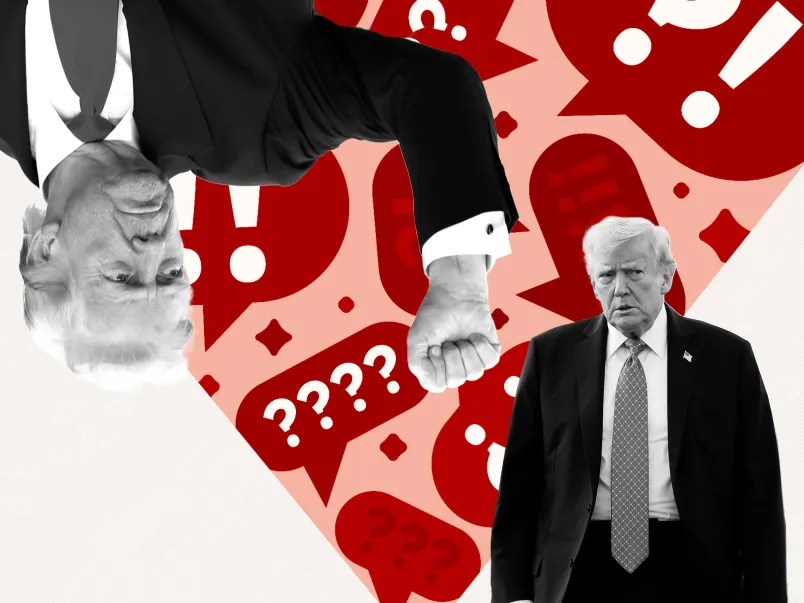This article is part of TPM Cafe, TPM’s home for opinion and news analysis.
An early episode of South Park features a subplot in which tiny gnomes sneak into the houses of South Park residents in order to steal their underpants. When asked why, they explain that collecting underpants is just the beginning: “Well, Phase 1, we collect underpants.” “What about Phase 2?” “Well, Phase 3 is profit.” When pressed, they explain again: “You see, Phase 1, collect underpants. Phase 2 … [silence]. Phase 3, profit.”
It’s a beautifully crisp lampooning of half-baked ideas, built for business plans but readily adaptable to any sort of scheme. And it’s profoundly relevant to the current electoral conversations.
Last month, President Trump noted that Vladimir Putin had suggested that he ban mail-in voting. Leave aside for a moment the provenance of the idea. Leave aside the fact that Trump is one of the millions of Americans who has (reliably, successfully) voted by mail. Leave aside the fact that Republicans, backed by infrequent voters, probably hurt themselves most right now by changing existing rules. The president has no power to ban mail-in voting.
Yet the following week, Trump reiterated his desire to end mail-in voting — and added that he’d be issuing an executive order to require voter ID. The president has no power to require voter ID either.
More recently still, some in Trump’s orbit have been claiming that he will declare a national emergency to “protect” federal elections. But even if the president declared a national emergency, that declaration would have no power to change even a single election practice.
These pronouncements predictably spark frenzy. The Constitution gives no role to the president in running elections. This administration has shown a proclivity for sprinting past constitutional boundaries (though I think it notable that they largely seem to be heeding specific court orders, perhaps because those can still come with real consequences), and so people assume he’ll ignore boundaries here too. But I’m not just talking about the president’s absence of legal authority to ban mail-in voting or require voter ID. What I mean is that he has no power to do either.
Trump has some unilateral ability to move the economy, in ways legal and illegal. He has some unilateral ability to move the military, in ways illegal and illegal. He has some unilateral ability to declare national emergencies that unlock other specific authorities granted by statute. He does not have the unilateral ability to move election practices.
State and local officials run elections according to laws passed by federal and state legislatures. The president can attempt to persuade them to change their practices all day long, and in some quarters, where state legislators are amenable, he might succeed in that persuasion. That persuasion might even start looking like “persuasion,” with increasing aggression. The social media posts might start coming in ALL CAPS.
But the president is not a magical wizard. State and local officials who don’t want to listen to a presidential order on elections don’t have to listen to a presidential order on elections. And that’s not shorthand for running to court to nullify the executive order. I mean that they really don’t have to listen. An executive order is a memo to federal agencies. For a state or local official, the day after an executive order looks exactly the same as the day before. They can read the executive order in the voice of Charlie Brown’s teacher. They can — and will — just decide to not do the thing he says they have to do.
There is no question that the president commands media attention, and an executive order without any authority complicates the communications environment. It stokes confusion, and destabilizes trust in election processes that have repeatedly proven worthy of that trust. But it only has that power to disrupt if we allow it to have that power. It doesn’t change any part of how elections actually work.
In Phase 1, the president issues an executive order declaring a national emergency and purporting to change the way we vote. In Phase 3, presto, the way we vote changes.
What’s Phase 2?





